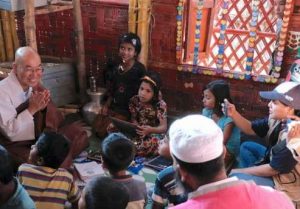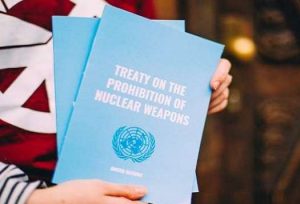Singapore

Those familiar with Japanese Buddhism will know that the largest school of the Dharma in Japan is Jodo Shinshu or Shin Buddhism. Jodo Shinshu has a number of adherents in the Western world, maintaining a presence in Australia, Canada, the United States, and across Europe. What is far less well known, even among the Jodo Shinshu sangha, is that the largest ethnic group represented among Shin Buddhists after the Japanese is that of the Han Chinese.
The first non-Japanese person to embrace Shin was probably a merchant from China who encountered Rennyo Shonin (1415–99, the “restorer” of Jodo Shinshu) while mired in grief after the death of his young daughter. Today, Shin Buddhist sanghas comprised of Chinese people exist in mainland China, Hong Kong, Taiwan, and Singapore, while individual Chinese adherents of Shin Buddhism can be found scattered across Southeast Asia and the West.
Buddhism is often thought of as something that was transmitted from the Chinese to the Japanese. Indeed, the great Buddhist scholar D. T. Suzuki once said that Shin (along with Nichiren) Buddhism represented the only truly Japanese form of Buddhism. Therefore, it is of great interest and importance how, and why, Chinese people from around the world have embraced and adapted a tradition as quintessentially Japanese as Jodo Shinshu, seeing it as a legitimate Pure Land Dharma gate.
In this series of articles, BDG will interview leaders of Shin Buddhist sanghas in mainland China, Hong Kong, and Singapore. This first interview is with Clement Tan of Singapore.
BDG: Could you share your spiritual background with us? How did you come to Shin Buddhism? Directly or by way of other schools of the Dharma or other religions? Did you grow up in a Buddhist household?
Clement Tan: I am a third-generation, local born Singapore Chinese of Teochew descent.1 My maternal grandmother was a devoted folk Buddhist and Daoist, like many Chinese are, and often visited various Buddhist and folk shrines. She would also recite various prayers daily in the Teochew dialect before her altar to Guanyin. Growing up in the 1990s, there were many English- and Chinese-language Buddhist books and materials circulating in both Buddhist and folk shrines. Thus, I gradually improved my knowledge of Buddhism. It also coincided with a growth period for the orthodox Buddhism movement in Singapore, which started in the 1980s in an attempt to move away from the syncretic forms that were practiced locally.
When my grandmother passed on, an elaborate preta-feeding ceremony (yankou 焰口) was held during the funeral. A few years earlier, when my maternal grandfather passed away from illness, a traditional Teochew folk bridge-crossing ritual was conducted.2 Being exposed to such different forms of ritual and beliefs naturally led me to question the nature of different teachings and belief systems.

Strange as it may sound, my parents were English-educated but not particularly religious (other than taking part in customary ancestral rituals or visiting shrines during Chinese New Year). My Classical Chinese was largely self-taught and I was exposed to Classical Chinese Buddhist folding texts when young. An example would be the 84-image apocrypha of the Great Compassion Mantra text.3 I would try to figure out how to pronounce the alien-looking transliterated characters and the related explanation. Many of the characters were not even found in regular Chinese dictionaries. When I visited temples, I would slowly learn how to read the couplets and decorative texts on the buildings.
Singapore has a myriad Buddhist schools and traditions, ranging from new religions to traditional Chinese Mahayana, Theravada, and Tibetan schools. Thus, I was trying out different types of Buddhist schools. In the early 2000s, I tried to study a bit of the Gelugpa teachings as well. However, I felt that there were inherent issues that were not resolved, thus I decided to turn back to traditional Pure Land Buddhism. At the same time, there was a famous Taiwanese monk who used popular media to preach to the entire Chinese diaspora, and I was listening to his talks as well. However, some aspects of his teachings didn’t answer the questions that I had and I decided that it might be time to search again.
In the 2010s, there were more English materials on Japanese Pure Land Buddhism, and I stumbled upon Sensei Inagaki’s website on the Taima Mandala. This gradually led to my correspondence with him, which resulted in me deciding to accept Jodo Shinshu after careful analysis of the tenets.

BDG: Could you tell us about the history of Jodo Shinshu in Singapore prior to the establishment of your dojo?
Clement Tan: Jodo Shinshu as a Japanese Buddhist school is inevitably tied to Japanese people, both within Japan and overseas. There were pockets of Japanese immigration to different Southeast Asian countries in the early 20th century. Singapore is made up of largely ethnic Chinese who are mainly of southern Chinese descent: Fujian, Guangdong, Hainan, and others. Thus, the dominant faith back then was mainly folk religions with ancestral veneration. Due to language and social norms at the time, different ethnicities and dialect groups often kept to themselves and rarely interacted.
According to my research through the available the national archives and library materials, there was a Jodo Shinshu meeting place established in the 1930s by Japanese immigrants in Singapore. Japanese immigrants in pre-war Singapore were mainly running businesses, such as photography studios and in the service industries. The dojo would likely have been operating from a residence. I came across a photograph from the 1930s of a funeral for a relatively well-off Japanese person, with a Japanese priest standing prominently. However, details remain sketchy. During the Occupation period from 1942–45, the Syonan Hongwani-ji opened a Japanese language school.4 The school operated out of a colonial building on Queen Street, and some graduation certificates are still preserved. During this period, there was a Betsuin (district temple) that opened around 1944 in the River Valley Road area. However, these were closed with the end of the war in 1945, with the priests and members, possibly considered defeated enemies, repatriated.
As the focus of these meeting places was to mainly serve Japanese immigrants and military personnel, there were no efforts to preach to local residents. Some locals took Japanese lessons mainly for the sake of employment or to prove that they were good citizens who had submitted to the military government. It was unlikely that there were any local followers as life under military rule was harsh and there was great feeling of resentment among the locals. This was different from colonial Taiwan, where local Taiwanese adopted Jodo Shinshu, some of whom even went to Kyoto to be ordained.
The only remnants of Jodo Shinshu left over from the pre-war era are a few tombs inscribed with Namo Amida Butsu in the local Japanese cemetery in Yio Chu Kang. However, this is only an inference as the interred person might have belonged to Jodo Shu or Tendai as well.

BDG: What motivated you to establish a Shin dojo in Singapore? When did you officially open?
Clement Tan: As there are a few people interested in Jodo Shinshu, I thought it would be good to find a place where meet-ups could be held without infringing on the privacy of our own homes. Also, I have helped Sensei Inagaki5 print several of his translations since 2007 and I needed to have a place to store them. Renting a place long-term is not viable and most areas do not allow religious activities. Before his passing in 2021, Sensei Inagaki expressed hope that I would start a small dojo in Singapore.
Property prices are very expensive in Singapore. Just last year, in 2023, I sold my own government flat—home ownership is within the reach of most Singaporeans thanks to government support—and used the proceeds to fund the purchase of an old 1960s ground floor unit that could be used as a religious center. I had to take on an additional loan to finance the difference.
I had a simple opening ceremony in December 2023 with Rev. Ho from Hong Kong as the officiating priest. Rev. Kobai, who is a highly respected Jodo Shinshu scholar, also took the time to attend the event via Zoom.
BDG: What is your dojo called and how is it affiliated with Shin institutions in Japan?
Clement Tan: I have yet to register with Registrar of Societies as a religious society and have only registered an events business entity. I used the name Zenkoji Amida Nyorai in Singapore as my Facebook name. I am not affiliated to any overseas organizations as of now, but moving forward I will consider available options.
TO BE CONTINUED IN PART 2
1 Teochew (caozhou; 潮州) Refers to the historical district at the eastern end of Guangdong province. Majority are Han Chinese who speak the Teochew dialect which is a sub- category of the Fujian Minnan dialect. The Teochew diaspora tend to be very religious as the coastal area of Chanshan is very prone to typhoons and various natural disasters. Ancestral veneration is also an integral part of family kinship in Teochew families. Both folk religion and Buddhism co-exist and syncreticism is commonly practiced. A significant minority of Teochews are Catholics as the faith was introduced in the late 19th century by missionaries.
2 The Crossing of the Bridge ritual (过桥) is a traditional form of Teochew death ritual done on the last night before cremation or burial. The lead chanter carries a paper lantern banner to lead the soul to cross the bridges in the Underworld. The bereaved family will circumambulate and cross a steel prop bridge and throw coins into a basin of water to symbolize the “buying” of the right of way for the deceased to pass. The lead chanter will sing to operatic tunes exhorting the virtues of the deceased. Similar rituals also exist in the Hakka and Hokkien dialect groups.
3 84 forms of the Great Compassion mantra (八十四相大悲咒): This is a Chinese Buddhist apocrypha text that assigns 84 pictures of various Buddhas etc to the 84 verses of the mantra. Characters used to transliterate Chinese mantras are often archaic and very difficult to pronounce, even for educated people. Most practitioners would learn it by rote.
4 Syōnan 昭南 : After the surrender of British forces by General Percival in February 1942, Singapore was renamed as Syonan island.
5 Inagaki Hisao (稻垣久雄) (Dharma Name: Zuio 瑞雄) (1929-2021) was a prolific and scholarly translator of many Pure Land Buddhist texts and was a recipient of the BDK Distinguished Service award.
See more
Related features from BDG
A Pure Land on the Rhine: Rev. Marc Nottellmann and the Eko House
Sangha Luso-Hispana Jinen-kô: An Online Shin Buddhist Community













